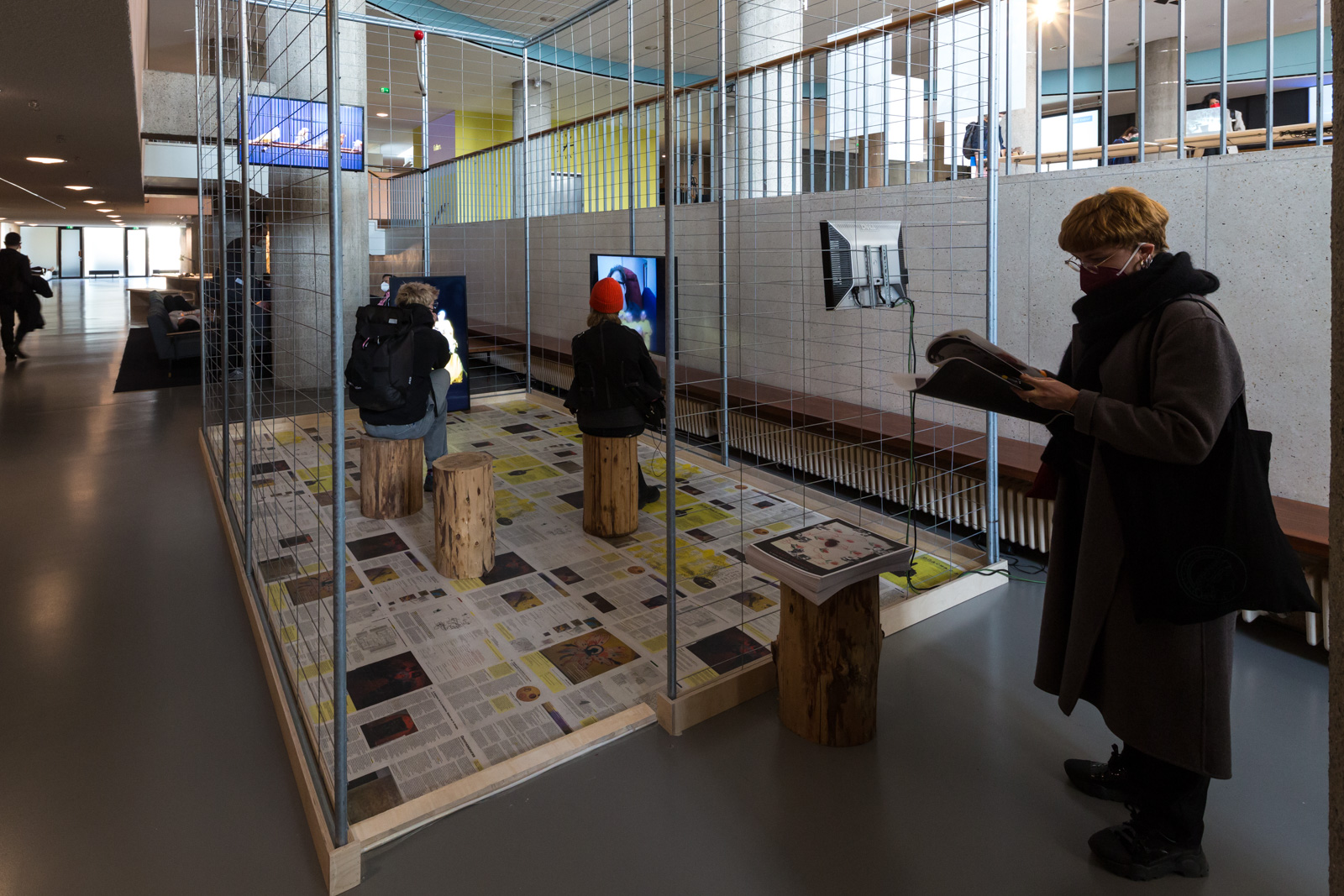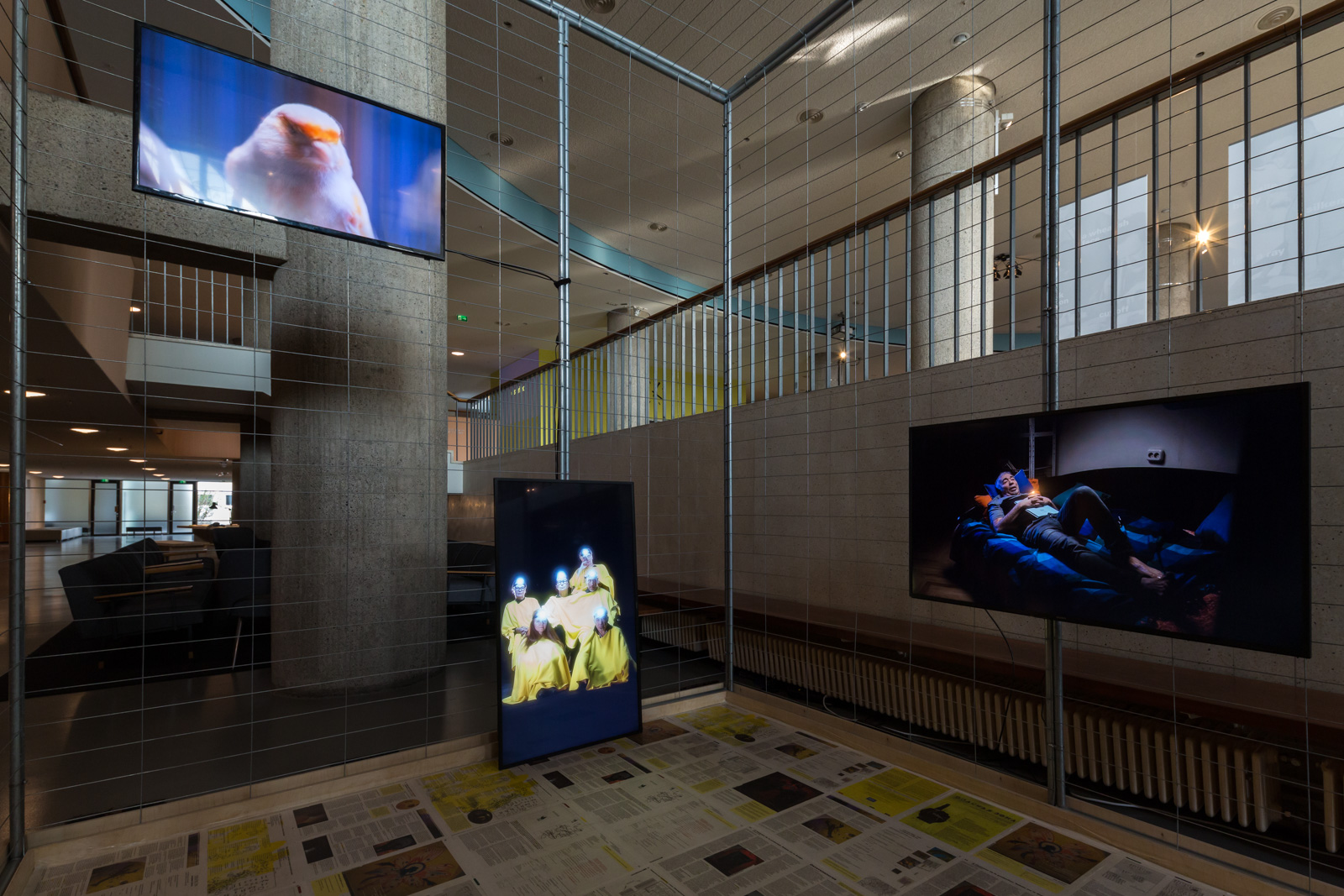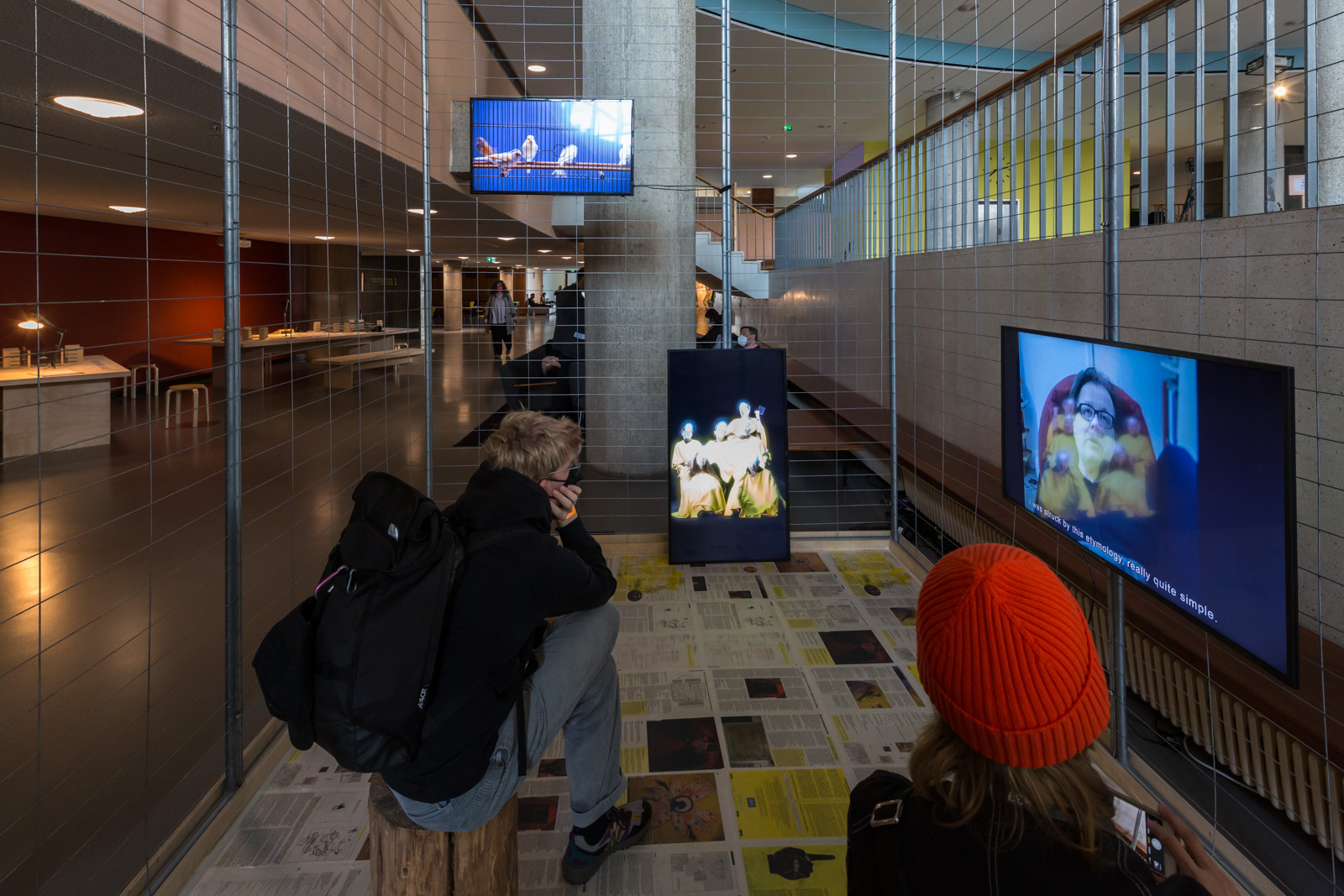Canary Archives
For their work Canary Archives, created for The Whole Life. Archives & Imaginaries, the collective Chto Delat produced an emergency newspaper issue. The editing took place in St Petersburg, under the impression of the first weeks of the Russian war against Ukraine and in shock of the violence. The newspaper assembles the anti-war views of Russian artists and critics (members of the Chto Delat network) in texts, graphics, and social media comments and expresses their unconditional support of and solidarity with the Ukrainian people.
The Installation
The installation Canary Archives employs the imagery of the canary in the coal mine, once used to alarm miners when carbon monoxide levels rose. It is a metaphor that can be seen as a paradigm for our anthropocentric relationship with the world, the broken connection between humans and the planet, and the crucial need for rare sensory perceptions of threat indicators in current times. The present-day is characterized by manifold life-threatening dangers; life-threatening to humans as well as all beings and memories of the ancestors.
But where is the canary that tells us whether the danger is real? And where is the exit from the mineshaft?
Canary Archives is realized in a bird cage with a four-channel video installation. In one video, the nine members of the collective Chto Delat share their dreams and stories related to the current global situation. Two more videos document the lives of nine canaries of different breeds in a cage and a scene of collective dance in the darkness. An additional channel shows the mineshaft elevator descending underground. All four channels combine the sounds of birdsong, oration and the noise of the shaft in a single musical composition.



Find more info about the work Canary Archives here.
Connected Material
Schaber’s contribution revisits her 2004 work culture is our business and considers the complex issues around these three agencies. At stake in these differences are how the image’s story should be told, and how this telling is embedded in the viewing and understanding of history.
An aural and visual essay that overlays several journeys, a sensory one that attempts to evoke a perceived time, place or geography through the mapping of territories, and a narrative one materialized as a speculative epistolary correspondence between the present and the future that continuously summons the past.
Archives are often perceived as somewhat static. They look back, they conserve, they remember. But the thinking that was present in the pieces of the Pinkus Archive all addressed ecology, extinction, and political agency in ways that not only extend into our present, but into our future.
This essay explores the plural notion of “ethnofuturisms” by employing a comparative approach. The cultural and political vicissitudes of “futurist” tropes are traced in literary and audiovisual creations that engage with the national, ethnic, and/or racial contexts of the Middle East, African diaspora, East Asia, and former Eastern Bloc.
Epistolary narrative, dialogism, intertextuality, speculative narrative — we imagine this text to be letters between the two of us across different temporalities, making use of a speculative and fragmented narrative in line with the themes we explore in our work: archiving the unarchivable, emotions, memories, and other human conditions within the horizon of extinction.
A conversation about KANG Sang-woo’s film KIM-GUN and how it treats historical evidence and testimonies as a ‘horizon of contingent truths’ with the potential to be pieced together in alternating ways, touching upon the complex dynamics of archives and life stories, collective memory and amnesia, the mechanisms of image-making and history-writing.
The legacy of anti-colonial leader and Pan-Africanist revolutionary Amílcar Cabral (1924-1973) still calls for cultural readings, and not strictly political ones. Contemporary art, so-called “artistic research” and critical theory will benefit from a cross-disciplinary approach which puts Cabral as relevant to art or which turns Cabral’s many contributions into tools.
Three videos are used in real time composition to explore the combination of the moving images – the edited sequence creates a non-existing-place.
Interrogating the archive of “green” extractivism is not just about uncovering access to knowledge, legal knowledge, for example, that can help expose (ecological and economic) crime and that can thus be a starting point for empowering true alternatives and thus alternative ways of living and organizing economic processes. It is also about creating a resonant space for shared thinking and reflection.
CLEPTOCRAZIA is an art and science festival curated by Valeria D’Ambrosio at Villa Romana in Florence. The project aims to disseminate knowledge on the roots of the environmental crisis through a cycle of lectures, screenings and performances with the contribution of international artists and scientists.